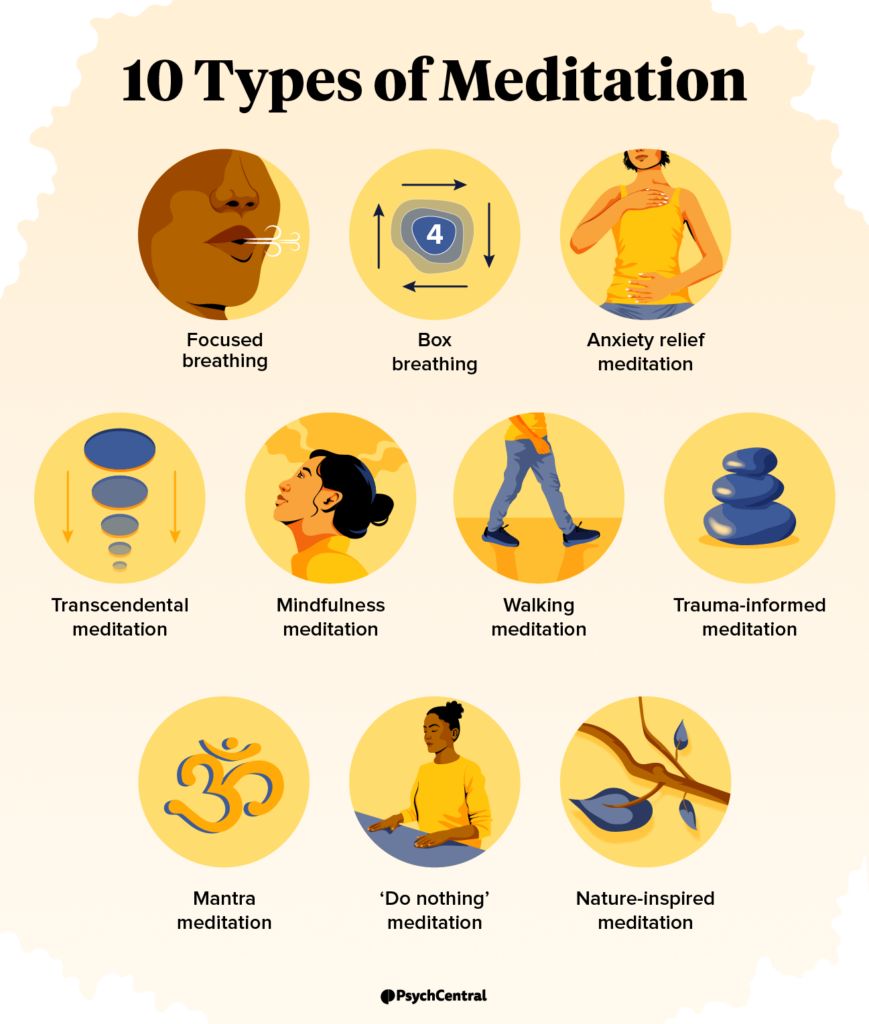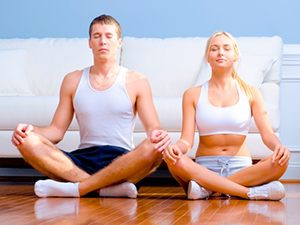Feeling overwhelmed and stressed? Meditation offers a powerful antidote. This simple guide provides a beginner-friendly introduction to the practice, dispelling common misconceptions and demystifying the process. We'll explore various meditation techniques, suitable for all skill levels, focusing on accessible methods to cultivate mindfulness and inner peace. Discover how even a few minutes of daily meditation can significantly improve your focus, reduce anxiety, and enhance your overall well-being. Let's embark on this journey towards a calmer, more centered you.
Finding Your Calm: A Beginner's Journey to Meditation
Understanding the Basics of Meditation
Meditation, at its core, is a practice of training your mind to focus and redirect thoughts. It's not about emptying your mind completely, but rather about developing the ability to observe your thoughts and emotions without judgment. Beginner meditations often focus on simple techniques like focusing on your breath or a mantra, gradually building the skill of mental concentration. The goal is to cultivate a sense of present moment awareness and reduce mental chatter, leading to a calmer, more focused state of mind. It's important to remember that meditation is a skill that improves with consistent practice, so be patient and kind to yourself as you learn.
Choosing the Right Meditation Style for You
There’s a wide variety of meditation styles, from mindfulness meditation, focusing on present moment awareness, to transcendental meditation, using mantras, to guided meditations, led by an instructor's voice. Experimenting with different styles is key to finding what resonates with you. Consider your personality and preferences; if you enjoy structure, guided meditations may be ideal. If you prefer a more independent approach, exploring mindfulness or focusing on your breath might be more suitable. There's no right or wrong way, the best style is simply the one that helps you connect with yourself and experience the benefits of meditation.
Creating a Dedicated Meditation Space
While you can meditate anywhere, creating a dedicated space can significantly enhance your practice. This doesn't need to be elaborate; it simply requires a quiet, comfortable area where you won't be disturbed. Consider factors like lighting, temperature, and comfort; a soft cushion or chair can make a difference. The goal is to create an environment that promotes relaxation and reduces distractions. Having a consistent space helps your mind associate that location with relaxation and focus, making it easier to enter a meditative state.
Incorporating Meditation into Your Daily Routine
Consistency is key to reaping the benefits of meditation. Start with short, manageable sessions, even just 5-10 minutes a day. It’s better to meditate regularly for a shorter time than to try long sessions infrequently. Find a time of day that works best for your schedule, whether it's first thing in the morning, during your lunch break, or before bed. Make it a non-negotiable part of your routine, similar to brushing your teeth, to ensure you make time for it, even on busy days. The cumulative effect of regular practice will be more significant than infrequent, longer sessions.
Overcoming Common Challenges in Meditation
It's common to experience challenges when starting meditation, such as a racing mind or feeling restless. Don't get discouraged; these are normal experiences. When your mind wanders, gently redirect your focus back to your chosen technique, whether it's your breath, a mantra, or a guided visualization. Remember that meditation is a practice, not a performance. Be patient with yourself, celebrate your progress, and acknowledge that some days will be more challenging than others. The important thing is to keep practicing and cultivate a sense of self-compassion.
| Challenge | Solution |
|---|---|
| Racing thoughts | Gently redirect your attention to your breath or mantra. |
| Restlessness | Adjust your posture or try a different meditation style. |
| Frustration | Remember that meditation is a skill that improves with practice. Be patient with yourself. |
| Difficulty focusing | Start with shorter meditation sessions and gradually increase the duration. |
| Feeling sleepy | Meditate at a time when you are more alert, or try a more active meditation style. |
How should a beginner start meditation?
How to Start Meditation
How Should a Beginner Start Meditation?
Beginning meditation can feel daunting, but it's a skill developed gradually, not mastered overnight. The key is consistency and patience, not perfection. Start with short, manageable sessions and gradually increase the duration as you become more comfortable. Focus on creating a regular practice rather than aiming for long, intense sessions early on. Don't be discouraged if your mind wanders – it's perfectly normal. The practice is about gently redirecting your attention back to your chosen focus, not eliminating thoughts altogether. Finding a comfortable and quiet space is crucial for minimizing distractions. Experiment with different techniques to find what works best for you, and remember that it's a journey, not a race.
Finding the Right Time and Place
Establishing a consistent meditation practice hinges on finding a suitable time and location. Consistency is key to experiencing the benefits. Try to set aside the same time each day, even if it's just for five minutes. This helps create a routine and makes it easier to stick with your practice. Choose a quiet space where you won't be disturbed. This could be a spare room, a corner of your bedroom, or even outdoors in nature. Minimize distractions by turning off your phone and ensuring the environment is conducive to relaxation.
- Choose a consistent time: Morning, evening, or lunchtime – select a time that fits your schedule and stick to it.
- Find a quiet space: Minimize noise and visual distractions.
- Prepare your environment: Dim the lights, use comfortable seating, and perhaps light a candle.
Choosing a Meditation Technique
Numerous meditation techniques exist, each with its own approach and benefits. Beginners often find guided meditations the easiest starting point. These involve following an instructor's voice, which can help keep your mind focused and ease anxiety about "doing it wrong." Other popular techniques include mindfulness meditation (focusing on the present moment), breath awareness (observing your breath), and loving-kindness meditation (cultivating feelings of compassion). Experiment with different techniques to discover what resonates with you and supports your personal goals.
- Guided meditations: Apps like Calm or Headspace offer excellent introductory guided meditations.
- Mindfulness meditation: Focus on your senses and the present moment.
- Breath awareness: Pay attention to the sensation of your breath entering and leaving your body.
Dealing with Distractions
It's completely normal for your mind to wander during meditation. Thoughts, sounds, and sensations will inevitably arise. The key is to treat these distractions as opportunities for practice, not failures. When you notice your mind drifting, gently acknowledge the thought without judgment and redirect your attention back to your chosen focus (your breath, a mantra, etc.). Don't get frustrated; it's the act of repeatedly returning to your focus that strengthens your concentration.
- Acknowledge distractions without judgment: Simply observe them and let them go.
- Gently redirect your attention: Bring your focus back to your chosen anchor (breath, mantra, etc.).
- Practice patience and self-compassion: Meditation is a skill that develops over time.
Setting Realistic Expectations
Meditation is a practice, not a performance. Avoid comparing yourself to others or setting unrealistic expectations for yourself. Start with short sessions (5-10 minutes) and gradually increase the duration as your comfort level grows. Focus on the process, not the outcome. The benefits of meditation often appear gradually; consistency is far more important than length of sessions. Be patient with yourself and celebrate your progress, no matter how small.
- Start small: Begin with short sessions and gradually increase the duration.
- Focus on consistency: Regular practice is more important than long sessions.
- Be patient and kind to yourself: Meditation is a journey, not a race.
Finding Resources and Support
Many resources are available to support your meditation journey. Guided meditation apps offer a convenient and accessible way to begin. Books and websites provide detailed information about various meditation techniques and philosophies. Consider joining a meditation group or class to connect with others and receive guidance from experienced practitioners. Seeking support can be particularly helpful in overcoming challenges and maintaining motivation. Remember that even experienced meditators sometimes struggle; it's a part of the process.
- Apps: Explore apps like Calm, Headspace, or Insight Timer.
- Books and websites: Seek out reputable resources on meditation techniques.
- Groups and classes: Consider joining a local meditation group or online community.
Which meditation is good for beginners?

Meditation for Beginners
For beginners, mindfulness meditation is generally considered the easiest and most accessible type of meditation. It focuses on the present moment, observing your thoughts, feelings, and sensations without judgment. This approach requires no prior experience and can be easily learned through guided meditations available online or through apps. The simplicity of focusing on your breath and bodily sensations makes it a great starting point for building a consistent meditation practice. It's less demanding than other techniques and provides a solid foundation for exploring more advanced practices later on. The emphasis on non-judgmental observation helps cultivate self-compassion and reduces stress.
What are the benefits of mindfulness meditation for beginners?
Mindfulness meditation offers numerous benefits for beginners. It can significantly reduce stress and anxiety by helping you become more aware of your thoughts and emotions without getting carried away by them. Regular practice can improve focus and concentration, making it easier to concentrate on tasks and reducing mental clutter. It can also cultivate self-awareness, leading to a better understanding of your own emotional responses and patterns. Furthermore, mindfulness has been shown to improve sleep quality and emotional regulation.
- Stress Reduction: Develops coping mechanisms for stress.
- Improved Focus: Enhances concentration and attention span.
- Emotional Regulation: Helps you understand and manage emotions more effectively.
How long should a beginner meditate each day?
Starting with short meditation sessions is crucial for beginners. Aim for 5-10 minutes daily. Consistency is more important than duration, so it's better to meditate for a shorter period regularly than to attempt longer sessions infrequently. As you become more comfortable and experience the benefits, you can gradually increase the duration of your sessions. Even short periods of mindful awareness can make a significant difference.
- Start small: Begin with 5-10 minutes daily.
- Consistency is key: Regular practice is more important than length of sessions.
- Gradually increase: Extend meditation time as comfort levels increase.
Where is the best place to practice meditation for beginners?
Finding a quiet and comfortable space is important for beginners. This could be a dedicated meditation corner, your bedroom, or any location where you feel relaxed and undisturbed. Minimize distractions as much as possible: turn off electronic devices, and choose a time when you're unlikely to be interrupted. Sitting on a cushion or chair with good posture can also help, although lying down can also be beneficial if you are feeling tired. The key is to create an environment that supports a calm and focused state of mind.
- Quiet and comfortable space: Find a place free from distractions.
- Minimize interruptions: Turn off phones and other devices.
- Comfortable posture: Sit or lie down in a way that feels supportive.
What if my mind wanders during meditation?
It's completely normal for your mind to wander during meditation, especially when you're starting out. Don't judge yourself for this; it's a natural part of the process. When you notice your mind has drifted, simply acknowledge the thought or distraction without judgment, and gently redirect your attention back to your breath or chosen focus point. This practice of redirecting your focus is a key skill in meditation, and it becomes easier with time and consistent practice. Don't get discouraged—it's all part of the learning process.
- Mind wandering is normal: Don't be critical of yourself.
- Gently redirect focus: Bring your attention back to your breath.
- Practice patience: It takes time and consistency to develop this skill.
What is the first rule in meditation?

There's no single universally agreed-upon "first rule" of meditation, as different traditions and teachers emphasize various aspects. However, a strong contender for a foundational principle is finding a comfortable and stable posture. This is crucial because physical discomfort can easily distract the mind and disrupt the meditative state. While some advanced practitioners may meditate in unconventional positions, for beginners, establishing a comfortable and stable physical foundation is paramount for success.
Finding a Comfortable Posture
Before you even begin focusing on your breath or thoughts, you need to find a physical position that allows you to sit or lie down comfortably without too much tension or discomfort. This is crucial because physical sensations will constantly be vying for your attention, and a stiff or uncomfortable posture will make it significantly harder to quiet your mind. A stable posture also helps prevent you from falling asleep.
- Sit on a cushion on the floor, using a chair for back support if needed.
- Maintain a straight but relaxed spine. Avoid slouching or rigidly straightening.
- Rest your hands comfortably in your lap or on your knees.
Maintaining a Relaxed Body
While maintaining a stable posture, it's important to avoid holding any unnecessary tension. Physical tension often reflects mental tension, creating a feedback loop that makes it harder to relax and focus. Consciously relax your shoulders, jaw, and any other areas that might feel tight. The goal is to feel grounded and present without being rigid.
- Consciously scan your body, noticing areas of tension.
- Breathe deeply into those areas, allowing the tension to release with each exhale.
- Use gentle stretches or mindful movements before beginning if necessary.
Managing Distractions
Inevitably, your mind will wander during meditation. This is perfectly normal. The key is to observe your thoughts without judgment. When you notice your mind drifting—which will be frequently— gently redirect your attention back to your chosen focus (breath, mantra, etc.). Don’t get frustrated by the distractions; simply acknowledge them and return to your practice.
- Acknowledge the distraction without dwelling on it.
- Gently redirect your focus back to your breath or chosen object of meditation.
- Practice patience and self-compassion; it's a skill developed over time.
Cultivating Patience and Consistency
Meditation is not a quick fix; it's a practice that requires patience and consistent effort. Don't expect immediate results or profound experiences. Instead, focus on showing up regularly, even if it's just for a few minutes each day. The cumulative effect of consistent practice will gradually lead to greater calmness, focus, and self-awareness.
- Start with short sessions (5-10 minutes) and gradually increase the duration.
- Establish a regular schedule to build consistency.
- Be kind to yourself and don’t get discouraged if you find your mind wandering.
Choosing a Focus
Before you begin, you need to choose a focus for your attention. This could be your breath, a mantra (repeated word or phrase), a visualization, or even a specific sensory experience like the feeling of your feet on the ground. Having a clear focus helps anchor your mind and prevents it from wandering aimlessly. The key is choosing a focus that feels natural and comfortable for you.
- Experiment with different focuses to find what resonates best.
- Start with a simple focus like your breath.
- Avoid overly complex or challenging focuses, especially when starting out.
Frequently Asked Questions
What is meditation, and is it right for me?
Meditation is a practice of training your mind to focus and redirect your thoughts. It involves techniques like focusing on your breath, a mantra, or a visual image to calm the mind and achieve a state of relaxation. While it's not a cure-all, many find meditation helpful in managing stress, anxiety, and improving focus and overall well-being. Whether it's right for you depends on your personal goals and preferences, but it's worth trying to see if it can benefit your life. It’s accessible to almost everyone, regardless of experience or background.
How much time do I need to dedicate to meditation each day?
There's no single answer to this, as it depends on your personal goals and schedule. Even just 5-10 minutes a day can make a significant difference. Starting small and gradually increasing the duration is recommended, rather than aiming for long sessions initially. Consistency is key; short, regular practices are far more beneficial than sporadic, longer ones. Listen to your body and adjust the time accordingly; don't feel pressured to meditate for longer than you feel comfortable with.
What if my mind wanders while meditating?
It's perfectly normal for your mind to wander during meditation. The practice is not about stopping your thoughts completely, but rather about gently redirecting your attention back to your chosen focus (breath, mantra, etc.) when you notice your mind has drifted. Don't judge yourself for having distracting thoughts; simply acknowledge them and gently guide your focus back. This process of redirecting is a crucial part of building mental discipline and improving your ability to concentrate.
What are the benefits of meditation for beginners?
Beginners often experience a range of benefits from meditation, even after short periods. These can include reduced stress and anxiety, improved sleep quality, increased self-awareness, enhanced focus and concentration, and a greater sense of calm and inner peace. The benefits are cumulative, meaning that the more consistently you practice, the more pronounced these effects become. It’s a powerful tool for self-improvement accessible to everyone.
 How to Meditate for Stress Relief and Clarity
How to Meditate for Stress Relief and Clarity Meditation Hacks to Calm Your Mind Instantly
Meditation Hacks to Calm Your Mind Instantly Deep Meditation for Stress-Free Living
Deep Meditation for Stress-Free LivingIf you want to know other articles similar to Meditation for Beginners: A Simple Guide you can visit the Meditation and Relaxation category.
